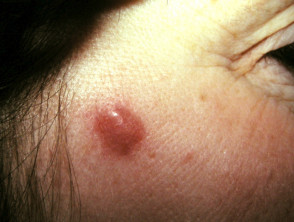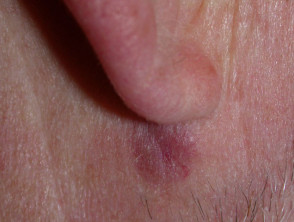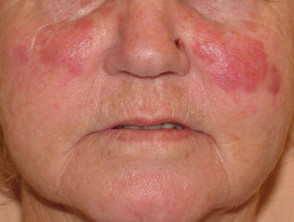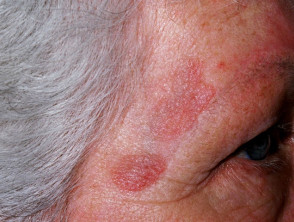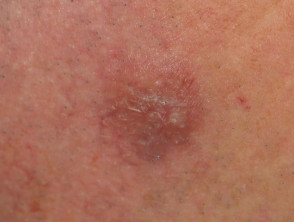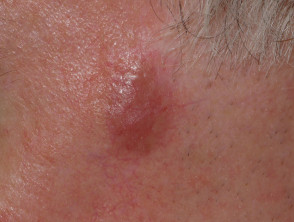What is granuloma faciale?
Granuloma faciale is a rare, non-cancerous skin disorder that is characterised by single or multiple papules, plaques or nodules, most often occurring on the face.
Who gets granuloma faciale?
Granuloma faciale most often affects healthy middle-aged white men, although it has been found in males and females of all races and ages.
What are the signs and symptoms of granuloma faciale?
Patients most often present to their doctor after noticing a spot or lesion on their face that then enlarges or multiplies in number over several weeks or months. These lesions are usually:
- Varied in colour: skin coloured, reddish-brown, blue or purple
- Varied in size from a few millimetres to several centimetres
- Elevated and soft
- Characterised by prominent follicles (pores)
- Defined with a border
- On the face, although similar lesions have been found on other parts of the body such as the scalp, trunk and extremities, when they are known as extrafacial granuloma faciale
Granuloma faciale is usually symptomless. Some patients may complain of tender, itching or stinging lesions.
Granuloma faciale
What causes granuloma faciale?
Why granuloma faciale occurs remains unknown but sun exposure has been implicated:
- Lesions appear more often on sun-exposed areas
- Lesions darken when exposed to sun
How is it diagnosed?
Diagnosis is confirmed by skin biopsy and is often necessary to rule out other skin diseases that have similar appearance. Granuloma faciale is characterised by inflammatory cells in the dermis including eosinophils (allergy cells) and vasculitis (inflamed blood vessels).
Differential diagnosis
Skin conditions that may appear similar to granuloma faciale include:
- erythema elevatum diutinum
- sarcoidosis
- cutaneous lupus erythematosus
- polymorphous light eruption
- Jessner lymphocytic infiltration
- lymphocytoma cutis
- mycosis fungoides
- insect bite reaction
- fixed drug eruption.
Treatment of granuloma faciale
Granuloma faciale is a chronic condition with exacerbations and remissions. Spontaneous resolution rarely occurs. The disease appears not to have any relationship to internal disease and treatment is mainly to improve the appearance. Various medical and surgical therapies have been used but none have been consistently successful. Granuloma faciale also has the tendency to recur after treatment.
Medical therapies used with varying results include:
- Topical steroids
- Corticosteroid injections
- Dapsone
- Antimalarial tablets (hydroxychloroquine)
- Dapsone
- Topical psoralen UV-A (PUVA)
- Radiation therapy
Surgical therapy may also be used. Results are variable and may leave scarring.
- Surgical excision
- Dermabrasion
- Carbon dioxide laser
- Electrosurgery
- Cryotherapy
- 585 nm pulsed-dye laser
